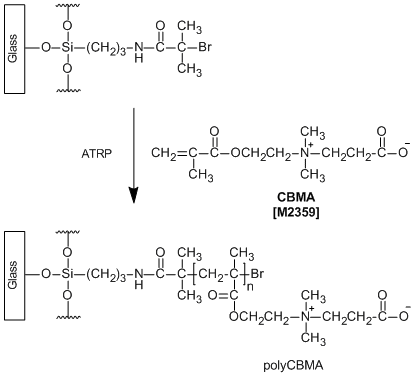Maintenance Notice (3:15 AM - 2:55 PM May 24, 2025 UTC): This website is scheduled to be unavailable due to maintenance. We appreciate your patience and understanding.
Product Document Searching Made Easy by 2D Code! | TCI Materials Science News May 2025 | [Product Highlights] Endogenous Biotin-Blocking Reagent... | Various analytical charts can be searched on each product detail page and Product Document Search (The kinds of analytical charts differ by product)
Maximum quantity allowed is 999
Please select the quantity
Zwitterionic Monomer for the Synthesis of Biocompatible Polymers
3-[[2-(Methacryloyloxy)ethyl]dimethylammonio]propionate (CBMA) is a zwitter ionic methacrylate ester with a quaternary ammonium group and a carboxyl group in the molecule. CBMA has been reported to be applied to biomaterials, just like 2-methacryloyloxyethyl phosphorylcholine (MPC) which is well known as a useful monomer for the synthesis of biocompatible polymers. For example, Jiang et al. have added repellency of protein adsorption to a glass surface by polymerizing the CBMA after modifying an atom-transfer radical polymerization (ATRP) initiator on the glass surface.1) Besides, CBMA has been used in the research of polymer modification on a gold surface,2) hydrogel implants resisting the foreign-body reaction,3) and drug delivery vehicles conjugating with an anticancer agent.4)

References
- 1)Superlow fouling sulfobetaine and carboxybetaine polymers on glass slides
- 2)Dual-functional biomimetic materials: nonfouling poly(carboxybetaine) with active functional groups for protein immobilization
- 3)Zwitterionic hydrogels implanted in mice resist the foreign-body reaction
- 4)Development of zwitterionic polymer-based doxorubicin conjugates: tuning the surface charge to prolong the circulation and reduce toxicity